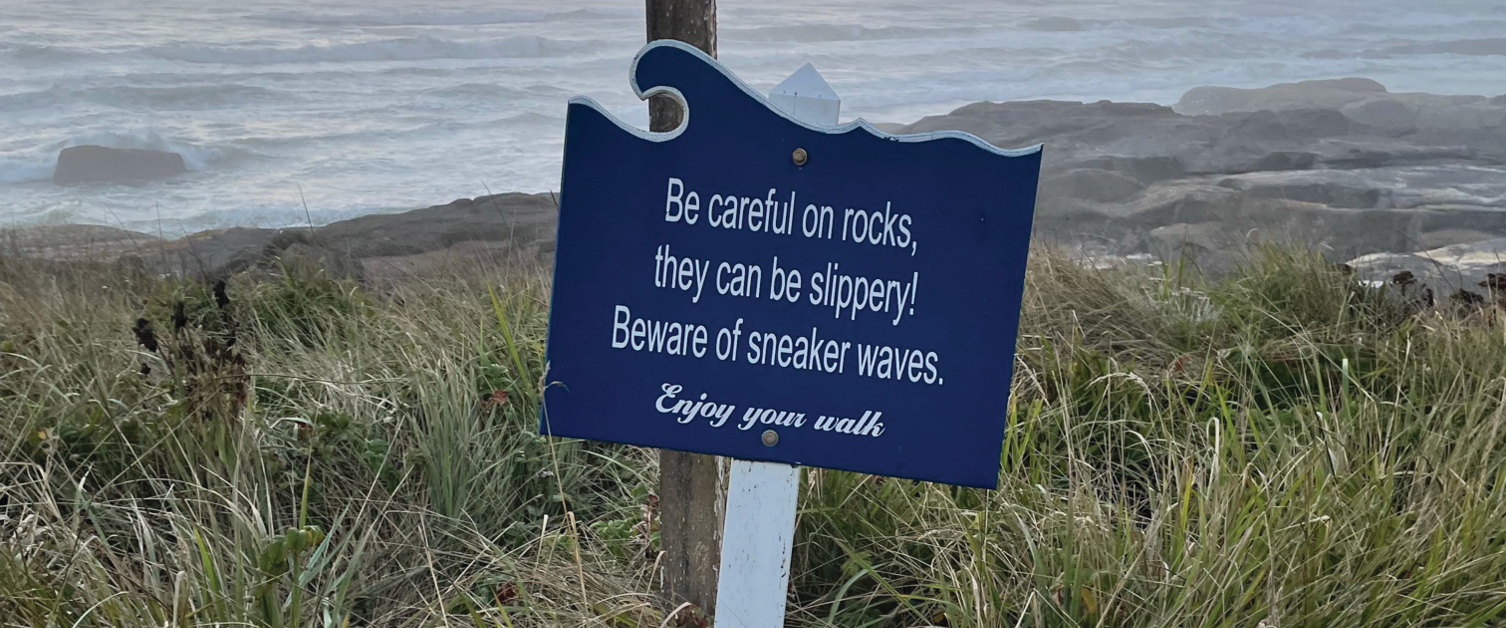Ready for a Sneak Attack
- By AMS Staff
- Jun 29, 2023
Photo credit: Michele Liu
Sneaker waves, which are also known as wave runup events, act like miniature tsunamis that can inundate beach areas with little warning and endanger beachgoers. They generally occur in locations where the continental shelf is narrow, such as the Pacific Northwest, but their exact cause is unknown. A new study published in Natural Hazards and Earth System Sciences uncovered details about the origins of these waves, focusing on a January 2016 event in which a number of sneaker waves overran beaches from Washington to northern California, injuring at least two people. Researchers utilized videos of the waves and also studied other data, including wave height readings and wind speeds, and found that the relationship between typical surface gravity waves, which typically appear at the shoreline as breakers, and longer-wavelength infragravity waves hiding beneath the breakers is key to the formation of sneaker waves. Large, distant storms near Alaska and the South Pacific can cause a larger gap in time between each wave in a set of gravity waves as they travel toward shore, creating an organized wave field, which in turn makes infragravity waves longer and stronger. Longer waves contain more energy than shorter waves, and “the longer the wave is, the less likely it is to break,” explains coauthor Tuba Özkan-Haller of Oregon State University. “Instead, it sloshes up, like the water would if you’re getting into a bathtub.” Stormy weather near the coast can disrupt the wave field and stifle sneaker wave occurrence, but when winds are calm, the longer, more energized waves can become sneaker waves, sloshing ashore higher than the other waves. The findings could help improve advanced warning of sneaker waves, which since 2005 have caused dozens of drowning deaths in the Pacific Northwest. “The more we learn, the closer we get to our ultimate goal, which would be to develop a warning system that is specific, accurate, and localized,” Özkan-Haller says. [Source: Oregon State University]
* For more content from the Bulletin of the American Meteorological Society, please click here.
